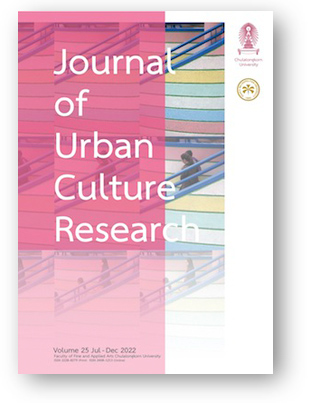The Devil in the Details: Analysing the Ethno-Cultural Blending in Malaysian Museum Buildings
DOI:
https://doi.org/10.14456/jucr.2022.23Keywords:
Asian Architecture; Ethno-cultural Blending; Museum Design; Malaysian Buildings; Malaysian Architecture; MalaysiaAbstract
Museums are often used as a ‘visualizing technology’ to project the cultural identities of a nation or a particular demographic. The choice of building, either newly constructed or converted from an historic structure, places the importance of its architectural features to convey certain meanings over others. Using comparative analysis on multiple case studies as the main method for data collection, this paper identifies the architectural features on three selected building facade of Penang museums in relation to one another. It will then determine the cultural influences to explore the mechanism of ethno-cultural blending integrated into the architectural styles. Penang was chosen due to its heterogeneous population, allowing for symbiotic blending of diverse cultures, ethnicities and religions. Hence, highlighting the significant role that architecture plays in shaping not only the design of a museum but also in projecting the national identities through the political and historiographical complexities of cultural blending.
Downloads
Published
Versions
- 2023-01-13 (2)
- 2022-12-20 (1)
How to Cite
Issue
Section
License

This work is licensed under a Creative Commons Attribution-NonCommercial-NoDerivatives 4.0 International License.
Authors authorize the JUCR to publish their materials both in print and online while retaining their full individual copyright. The copyright of JUCR volumes is retained by Chulalongkorn University.
The views and opinions expressed herein are those of the individual author(s) and do not necessarily reflect the policies or opinions of the Journal (JUCR), it editors and staff, Chulalongkorn University, or Osaka Metropolitan University.








